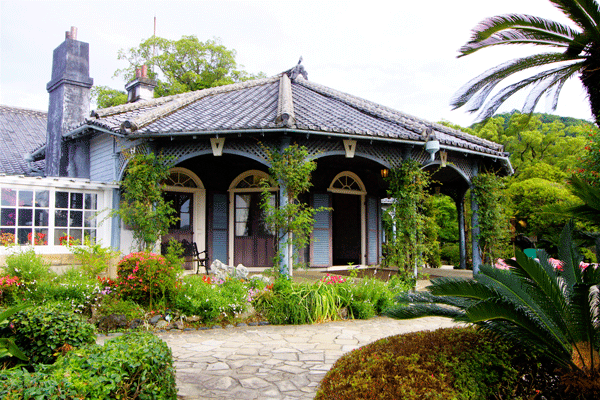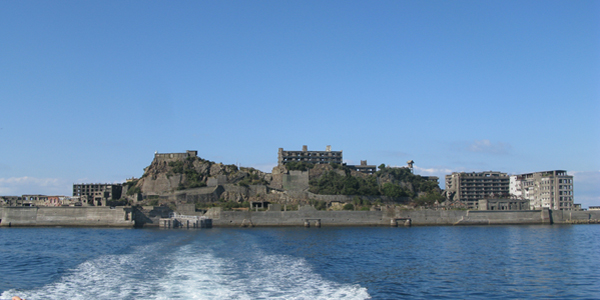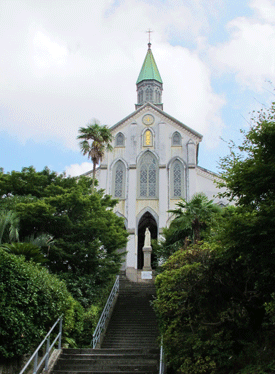When our travels took us to Kyushu in search of Nagasaki’s hidden Christians, we felt we must take a peek around the city itself. Here is a quick roundup of six of our highlights… That’s right, six.
Peace Park/Nagasaki Atomic Bomb Museum
The iconic Peace Statue, designed by local sculptor Seibo Kitamura, forms the centre of the park and points towards the sky to “symbolize the nuclear menace.”
Its flat, outstretched other hand allows us to consider “eternal peace” and slightly closed eyes express a prayer for the souls of each of the victims.
Around 70,000 lights illuminate the minimalist Memorial Hall nearby; the same number of people lost their lives after the bombing and up until the end of 1945.
Glover Garden
Once home to the pioneers of trade with Japan. They made their money and chose perhaps the best perch in the city to build their western-style houses – the first of their sort in Japan.
The complex is full of fascinating windows into the past and wonderfully restored architecture of the day. It’s a great spot from which to learn the history of Nagasaki and its part in the planning of Japan as an open nation.
Thomas Glover (his house is pictured) was a Scot and amongst other things brewed beer. His brewery was the predecessor of the Kirin Beer Co. and some say the ‘moustache’ that you can across the face of the dragon-like beast on the label of today’s cans is ‘his’.
Gunkanjima
This is actually Hashima, though the abandoned island looks so much like a battleship, particularly in silhouette, that many know it by its nickname.
In 1974, after petroleum had destroyed the viability of coal mining across Japan and work beneath the island stopped, scores left and for 35 years nobody returned.
Now, tours to viewing platforms on the edges of the island from Nagasaki port are easy to arrange. See it to believe it, but this was once said to be the most densely populated area in Japan.
Dejima
During the 200-year period of national isolation Dejima was a window for foreign trade; it was built in 1636 to isolate Europeans and prevent the spread of Christianity.
Now Nagasaki has enveloped what was once an island but the city has restored most of the buildings (in an ongoing project) and each of the houses, warehouses and guard stations now holds fascinating period reconstructions and museum pieces.
Churches and Oura Cathedral
The old belfry of the now rebuilt Urakami Church sits where it smashed down to earth during the catastrophic events of 1945 and walking around the whole area is a constant reminder of the past.
There is hope, though – consider a trip to Sanno Shrine and you’ll see a one-legged torii arch that has been restored retained as a reminder.
Oura Cathedral (pictured here) was built in 1864 and is the oldest wooden Gothic style church in Japan.
Memorial to the 26 martyrs
This is the site of the Martyrdom of the 26 Saints of Japan. The cruxifixion of 20 Japanese Christians and six foreign missionaries occurred on this hill near what is now Nagasaki station in 1597.
The Pope would later canonize them – in 1862 – and in 1962 Jesuits built a monument and museum here in their memory.
For more on our trip to Nagasaki have a look at our February 2013 print issue (which is free to read in our archive).
Updated On December 26, 2022












